YOUR WEALTH CONNECTION
April 2022

An April Letter to Clients: How Should You ‘Spend’ Your Tax Refund
Are you getting a tax refund this year? Plenty of folks are. Much like trivia, running through the IRS data is always interesting…at least for those who love diving into the minutiae. So here are some tax facts for the 2022 season:
- Through March 25, 2022, the IRS has received over 81 million returns and processed just under 79 million returns.
- Roughly half the returns were delivered by tax professionals and the remainder were self-prepared.
- So far, the IRS has sent out almost 58 million refunds checks totaling $188.7 billion. The average tax refund is $3,263, which is 12.4% above a year ago. It’s a pretty good chunk of change for the average person.
While we would counsel against an interest-free loan to the federal government, some folks like what might be called “forced savings.”
But, getting back to our title, how might you best “spend” your lump sum. Maybe a better question we can ask is how might you best “invest” your cash windfall?
Not everyone will receive a refund or a large check from the IRS. But ideas we’ll put forth can be used when receiving any gift, bonus, or unexpected cash windfall.
Before we dive in, we want to quickly add: If your children, a relative or close friend has talked about their refund, feel free to forward our suggestions to them.
7 smart ways to invest your tax refund
- Do you have a rainy-day fund? Is if fully funded? You understand the importance of reserves. Whether it’s a home repair, auto repair, a layoff or unexpected bill, having cash set aside will ease the financial burden.
We recommend three to six months of readily accessible savings in the event of an emergency. If you don’t have a rainy-day fund, don’t procrastinate; get started today.
- Get out of debt. Years ago, I saw a quote that went something like this. “The road to poverty is paved by high interest rates.” I don’t know who coined the phrase, but many people run up high-rate debts and struggle to pay them off.
Pay down or pay off high-rate credit cards or unsecured loans. You might start off with the card with the lowest balance first. Wiping the slate clean on a card or cards is a big psychological win and will encourage you to stay in the battle until you are out of debt.
- Tackle your student loans. Can the president simply wave his hand and forgive your student loans? If he could (and maybe he can; the jury’s still out on this one), would you receive a 1099 for debt that’s forgiven (the devil is always in the details)? Or, for that matter, should you wait for the bureaucracy to solve your problem?
If you have an emergency fund and credit card debts are low, consider tackling your student loans. Sure, they helped you get through college, but they are a burden hanging over your financial future.
- We reap what we sow. If you don’t sow into a retirement plan, there will be no harvest come retirement. For example, if you take the hypothetical $3,263 tax refund and stash it in a Roth IRA, you’ll have $32,834 in 30 years, assuming an 8% annual return. Plus, you’ll pay no federal income tax when you take a qualified withdrawal from a Roth IRA.
At 10%, you’ll have $56,937, and at 6%, you’ll have $18,741. Of course, returns aren’t guaranteed and may vary, but trading one’s natural inclination for instant gratification for a future payoff can pay you a handsome reward.
- Invest in the future of your child, grandchild or yourself. There are various options, and we can point you in the right direction to help get your started.
You might consider an education savings account of a 529 plan for your kids. While you won’t get a tax deduction for contributions into the accounts, these vehicles allow you to grow the nest egg tax-free, and they can be withdrawn for qualified expenses without a tax liability.
Have you decided that you would like to invest in yourself? Do you want to ascend to the next level? Certifications and college classes can help sharpen your skills. Even if you are not career-oriented, investing in your hobbies can bring added enjoyment.
- Gifting your refund. You may decide that you don’t need the money. We know folks who gave away their stimulus checks to their kids or charity. What puts a smile on your face? That may be the appropriate strategy for your refund.
- Have some fun. As we said, the average refund check so far has been $3,263. You may take one of our ideas to heart and earmark the lion’s share toward that goal. But save some for yourself.
Whether it’s a nearby weekend trip, a day trip to the spa, or that expensive restaurant you have always wanted to try, it’s OK to take care of yourself.
These suggestions are just food for thought. But be strategic. Think long-term. And take some time to consider what you might do with your refund or any windfall you may receive. A lack of planning and impulsive decisions can be costly. And remember, we are always here to assist you.
Holding up against stiff headwinds
Last year, the reopening of the economy, new vaccines, strong profit growth and low interest rates fueled big gains in stocks.
By December 31, 2021, the broad-based S&P 500 Index, which is comprised of 500 large publiclytraded U.S. companies, had more than doubled from its late March 2020 bottom, according to data provided by the St. Louis Federal Reserve.
The bull market was just 449 trading-days old, and the S&P 500 Index had advanced 113%. In fact, when we compare the current bull market to the six best performing bull markets since the end of World War II (through the first 449 days), the current run easily exceeded its contenders.
But the winds have shifted in 2022.
Inflation is a growing problem, oil and gasoline prices are up sharply, investors are grappling with the fallout of Russia’s invasion of Ukraine, and the Federal Reserve has pivoted away from its easy money policy.
Yet, as the table of returns below illustrates, the major averages have been quite resilient in the face of stiff headwinds. Credit the economic expansion and rising corporate profits. It’s not completely counterbalancing the negativity, but it has cushioned the downside.
Table 1: Key Index Returns
MTD % | YTD % | |
Dow Jones Industrial Average | 2.3 | -4.6 |
NASDAQ Composite | 3.4 | -9.1 |
S&P 500 Index | 3.6 | -4.9 |
Russell 2000 Index | 1.1 | -7.8 |
MSCI World ex-USA* | 0.7 | -5.5 |
MSCI Emerging Markets* | -2.5 | -7.3 |
Bloomberg US Agg Bond TR USD | -2.8 | -5.9 |
Source: Wall Street Journal, MSCI.com, MarketWatch, Morningstar
MTD returns: Feb 28, 2022-Mar 31, 2022
YTD returns: Dec 31, 2021-Mar 31, 2022
*In US dollars
Stocks don’t move higher in a straight line. Volatility and corrections are to be expected, as we’ve discussed before.
Still, heightened uncertainty is rarely cause for celebration, even if losses have been relatively modest.
We don’t try to forecast when markets might correct. Instead, we make recommendations and individually craft portfolios based on several factors, including the idea that we will run into unexpected detours along the way.
Pullbacks are a normal part of investing. They are sparked by unexpected events. We will usually experience several corrections over the course of an economic expansion. But history says they are temporary.
While uncertainty generated by geopolitical events have rarely caused long-term damage to the major market indexes, they do create short-term volatility.
You see, the initial news of an event usually generates heightened uncertainty, which forces short-term traders to pull back. But if the crisis does not affect U.S. economic activity, investors typically incorporate the new normal into their outlook.
Let’s look at Ukraine. It’s fair to say this isn’t your typical geopolitical event. But so far, it seems to be following the historical pattern.
But let’s acknowledge the obvious. What is happening in Ukraine is far from ideal, and how the war may unfold is a big unknown. Recently, there have been no significant developments that might negatively affect investor sentiment, and investors seem to be taking the apparent stalemate in stride.
It’s not that we are immune to the horrific acts of aggression by Russia. We’re not. But investors look at geopolitical affairs through a very narrow prism. That is, how will an event or events impact the economy?
Few see a cessation of hostilities in the near term. However, investors may slowly be growing accustomed to the daily reports coming out of Ukraine. It’s as if we are becoming comfortably uncomfortable with the war.
Put another way, investors seem to slowly be incorporating a new normal into their collective outlook, as there hasn’t been a significant shock to demand for goods and services at home.
But, you may ask, what about oil prices? What about the surge in gasoline prices? For starters, it’s painful every time we fill up. And it will translate into higher inflation.
But the broader economic impact is less certain. For every penny increase in the price of gasoline, U.S. consumer spending drops by $1.18 billion a year, according to an estimate from Federated Global Investment Management (Bloomberg).
For example, a $0.75 jump in gasoline, if maintained over a year, would hit spending by roughly $90 billion. But U.S. Gross Domestic Product is over $24 trillion, which would translate to less than 0.4% of GDP. It’s not insignificant, but by itself, it’s not enough to throw the economy into a recession.
Then there is the Federal Reserve. Its commentary has grown increasingly aggressive as it hopes to rein in inflation.
At the March meeting, the Federal Reserve raised the fed funds rate by one-quarter of a percent to 0.25%–0.50%. Its own Summary of Economic Projections suggests we may see a fed funds rate of 1.75%–2.00% by year end. And, as Fed Chief Powell has said, don’t discount the possibility of at least a half-percentage point rate hike (or hikes) at upcoming meetings.
Why is this important? For savers who want safe, interest-bearing investments it’s good news.
For equity investors, it’s more problematic. When bond yields and interest rates are low, they offer little competition to stocks. But rising rates and yields could encourage some investors to look at alternatives outside of equities.
From an economic perspective, some are asking if the Fed can bring inflation back down without causing a recession.
In past cycles, rate hikes were pre-emptive and proactively implemented to stave off any future jump in inflation. The Fed succeeded in engineering what’s called a soft landing in the mid-1980s and mid-1990s.
Today, the Fed is reacting to higher inflation. It creates economic uncertainties that we will carefully monitor throughout the year.
Disclosure: This presentation is not intended to be relied upon as forecast, research or investment advice, and is not a recommendation, offer or solicitation to buy or sell any securities or to adopt any investment strategy. The opinions expressed are as of the date noted and may change as subsequent conditions vary. The information and opinions contained in this letter are derived from proprietary and nonproprietary sources deemed by Hilltop Wealth Solutions to be reliable.
Additional information about Hilltop Wealth Solutions is available in its current disclosure documents, Form ADV, Form ADV Part 2A Brochure, and Client Relationship Summary Report which are accessible online via the SEC’s investment Adviser Public Disclosure (IAPD) database at www.adviserinfo.sec.gov, using SEC # 801-115255. Hilltop Wealth Solutions is neither an attorney nor an accountant, and no portion of this content should be interpreted as legal, accounting or tax advice.
Are You Retiring Within the Next 5 Years?
What to focus on as the transition approaches
Provided by Hilltop Wealth & Tax Solutions
You can prepare for the transition years in advance. In doing so, you may be better equipped to manage anything unexpected that may come your way.
How much monthly income will you need? Unfortunately, there is no “magic” number for everyone to strive for. Instead, examine your monthly expenses, considering any trips, adventures, or pursuits you have in mind for the near term. As a test, you can even try living on your projected monthly income for 2-3 months prior to retiring.
Should you downsize or relocate? Your home is not only a significant asset, it also represents a significant part of your lifestyle. After all, our homes are often a reflection of who we are. It follows that the decision of how much home we want—or need—may vary with each situation; it is not strictly a financial decision. However, if you are considering downsizing or relocating, the financial component of the decision should be considered thoughtfully.
How should your portfolio be constructed? For many retirees, the top priority is generating consistent income. With that in mind, your financial professional can adjust your portfolio with respect to your time horizon, risk tolerance, and goals. For example, some retirees prefer to maintain an amount of risk-averse investments that can provide income during retirement. However, even the most risk-averse investments aren’t immune to risk entirely.
How will you live? Whether you dream of endless Saturdays or dedicating your time to volunteering, remember that retirement is a beginning. Ask yourself what you would like to begin doing now. Think about how to structure your days to pursue that goal, and give it a shot! There’s no better way to prepare for what may come, than to practice in the present.
How will you take care of yourself? If you retire before age 65, Medicare may not be an option. If you’re considering early retirement, check if your group health plan extends certain benefits into retirement.
Even if you retire at 65 or later, Medicare may not be your ideal solution. Consider items Medicare doesn’t traditionally cover, such as extended care or other specialized medical services.
Review your retirement strategy as the transition approaches. Give your financial professional a call today. An adjustment or two before retirement may be all you need for a successful next chapter.
Erik Brenner, CFP® may be reached at 574.889.7526 or erikbrenner@hilltopwealthtax.com.
www.HilltopWealthTax.com
This material was prepared by MarketingPro, Inc., and does not necessarily represent the views of the presenting party, nor their affiliates. This information has been derived from sources believed to be accurate. Please note – investing involves risk, and past performance is no guarantee of future results. The publisher is not engaged in rendering legal, accounting or other professional services. If assistance is needed, the reader is advised to engage the services of a competent professional. This information should not be construed as investment, tax or legal advice and may not be relied on for the purpose of avoiding any Federal tax penalty. This is neither a solicitation nor recommendation to purchase or sell any investment or insurance product or service, and should not be relied upon as such. All indices are unmanaged and are not illustrative of any particular investment. Investments seeking to achieve higher rate of return also involve a higher degree of risk.



